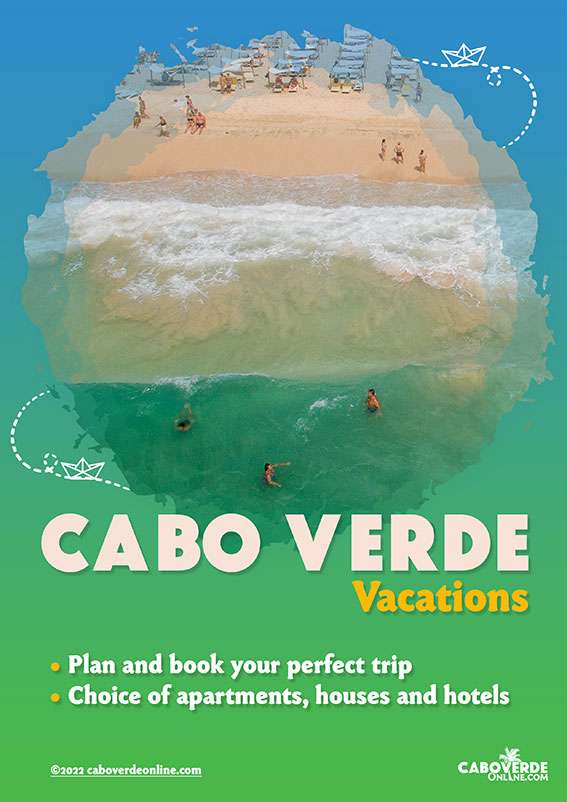Since the origin of history, Caboverdeans have been a largely mestizo: 80 percent of the population is mestizo, 17 percent black and 3 percent white. Little by little, Cabo Verde formed its cultural identity and then began to search for its own political identity. Cabo Verde finally obtained this with the National Independence, on the 5th of July 1975 after a long fight for the national liberation. On the 13th January, 1991, Cabo Verde finally settled upon the multi-party system with all the institutions of modern democracy.
Today, Cabo Verde is a rapidly developing country that enjoys peace and social stability. As far as health services, education and quality of life are concerned, Cabo Verde is ranked among the top countries in Africa.
Despite being a third world country, Cabo Verde has exemplary sanitary standards, with no contagious or endemic diseases, and with good coverage on all the islands. Its levels place it among the first of African countries and therefore, for this reason, no vaccination is required before entering the country.
Emigration – How it began!!!!
The natural poverty of these islands depending on agricultural economy based on poor goat breeding, the paucity of rainfall and the prevalence of dry and “brown” conditions, made the Caboverdeans emigrate to America first and later to Europe especially to Portugal, in search of a better life. The Caboverdean emigration to the United States began at a time when American fleets, dedicated to whale-fishing, sailed down the Atlantic Ocean surrounding the archipelago.
The need of labor force made the entrance of the Caboverdeans to America easier. Statistics that revealed information about the volume of Caboverdean emigration in the United States are not available. However, some official figures stated that 356 Caboverdeans emigrated to North America from 1887 to 1893. Meanwhile, in 1874, according to an official report about Brava, “boarding the American whalers was the greatest passion of most Caboverdean men looking for a better life. More than hundred people, interested in the whale-fishing, abandoned the island annually”. The people of Fogo and San Nicolau also emigrated to United States.
The first Caboverdean emigrants to America did not get in touch with their family for a long time, in particular, those from Brava and Fogo, causing a worry to their wives. Some of them therefore, thinking of the worst situation, were in mourning for their husbands. That was to make them “American’s widows”. Curiously, it seems that this behavior is associated with a superstition that people do believe. In so doing, they protected their husbands from harmful dangers and contributed to their return.
From seamen to farmers
From seamen Caboverdean emigrants became farmers working for themselves in the cultivation of strawberries and as wage-earners in the marshy areas of Cape Cod and in the cotton plantations. With the expansion of the textile industry in New Bedford characterized by lack of workmanship hundreds or thousands of them were employed in the factories. Some worked as stokers in the trains. This new life of Caboverdeans in America was due to the hard conditions of life aboard the whaling ships.
For many, the working conditions aboard approached those of slave ships and therefore many of the whaling crew set out to escape from those unpleasant situations and joined the American harbors to look for jobs on land. With the ever increasing number of Caboverdean emigrants to United States, the government enacted in 1917 a law forbidding the entrance of illiterate Negroes aged more than 16. This law became effective in 1918 and constituted an obstacle to the entrance of Caboverdeans. However, this was surmounted with other methods that allowed the clandestine entrance to the United States. Since the discriminatory restrictions, there were still many “secret” departures from the islands, which made obviously the trips expensive. Consequently, only a small number of people could make the trip.
When the United States government re-enforced more restrictive measures, Caboverdeans tried other ways to enter the United States. A new wave of Caboverdeans emigrated to America by marrying American citizens and therefore was entitled to the USA. The main harbor in Brava “Furna”, today sporadically frequented by ships, was a main stop for boats that sailed down the Caboverdean seas. It was said that the island of Brava had a school in Cova Rodela where some sea captains were trained. Meanwhile, early in 1893, the Nellie May made another round trip, this time with Captain José Godinho in command.
The passage to Cabo Verde Islands took ninety days – one of the most terrible on record for its length and for the suffering endured by passengers and its crew. It is worth mentioning that António Coelho, the owner of “Nellie May” was the first Caboverdean American that purchased a vessel.

